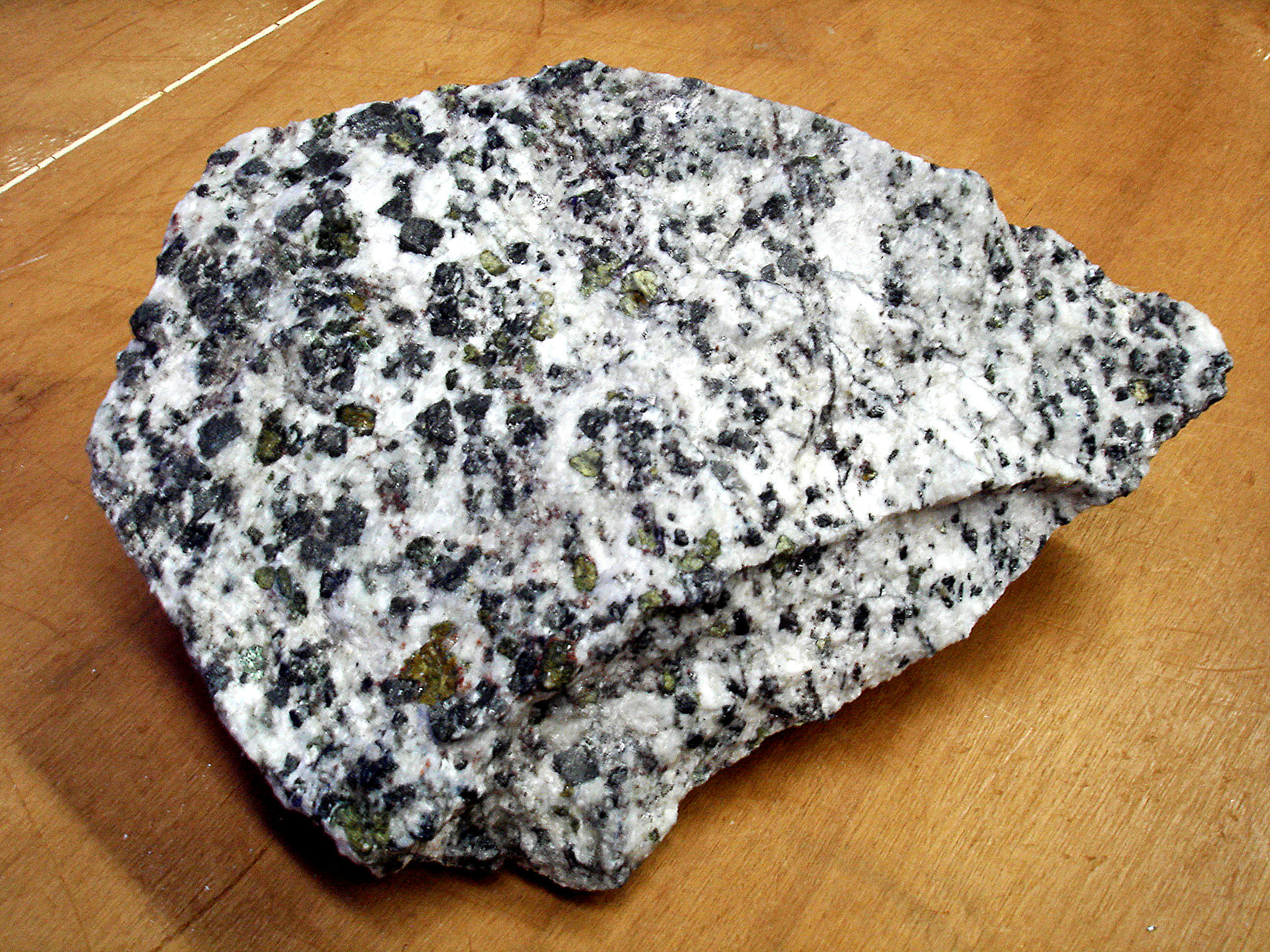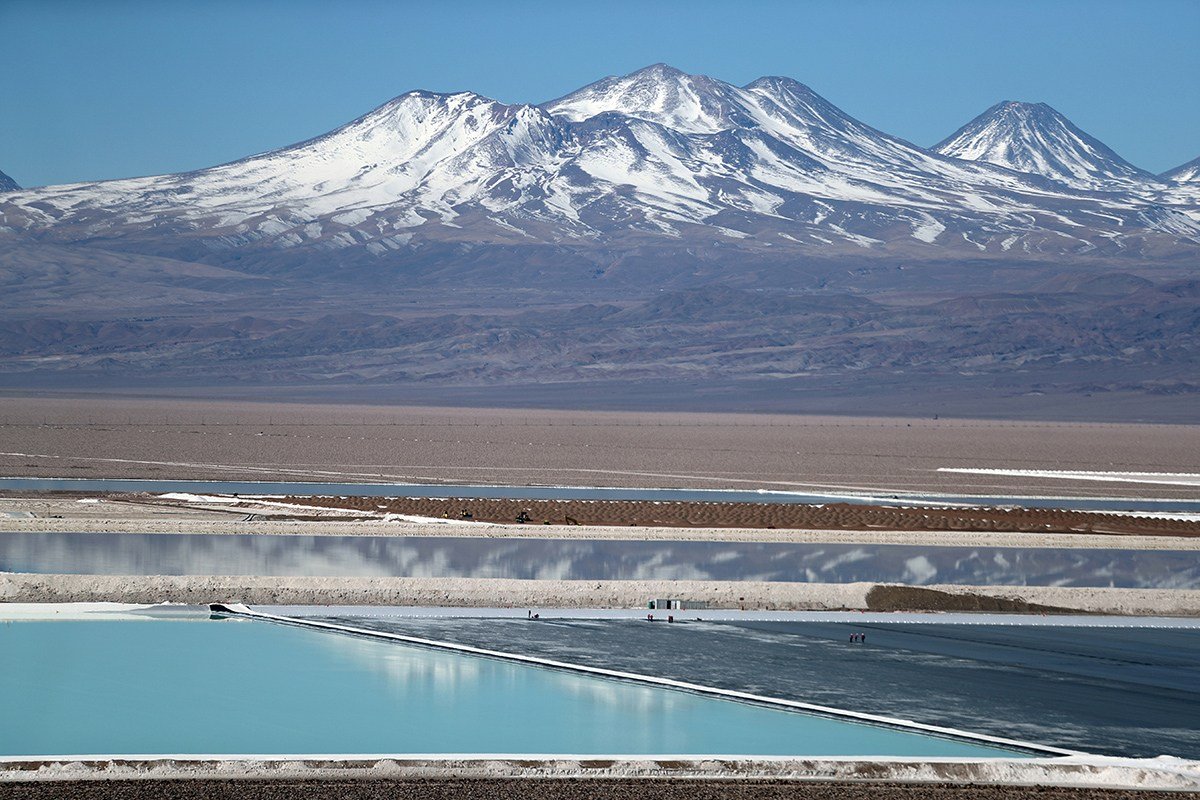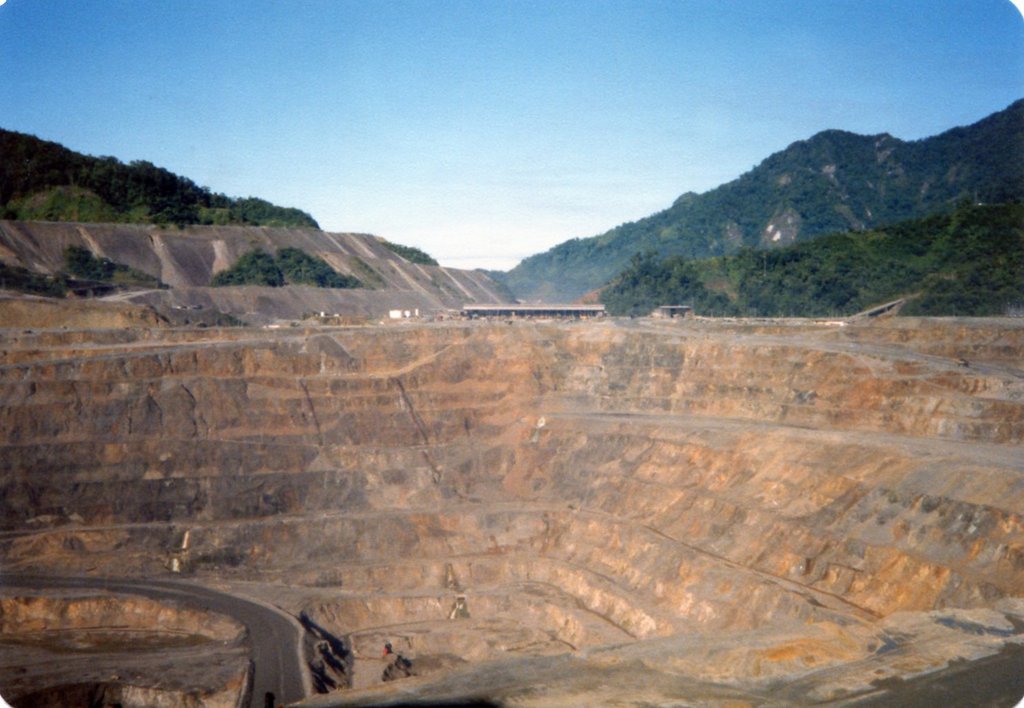A common motto throughout the mining industry is “If it can’t be grown, it has to be mined”. In the case of phosphates and agriculture, “in order to grow, it must first be mined”.
[box type=”info” align=”aligncenter” ]Disclaimer: This is an editorial review of a public mining company press release and is not an endorsement. It may include opinions or points of view that may not be shared by the companies mentioned in the release. The editorial comments are highlighted so as to be easily separated from the release text and portions of the release not affecting this review may be deleted. Read more at How to Use this Site.[/box]
VANCOUVER, BRITISH COLUMBIA–(Marketwired – May 20, 2014) – Focus Ventures Ltd. (TSX VENTURE:FCV) is pleased to provide assay results for the first 5 holes logged and assayed at the Bayovar 12 phosphate project near Piura, northern Peru. Assays have been received for holes JPQ-14-06, 14-01, 14-03, 14-08 and 14-13 drilled on 800m spacings along the northern part of the drill grid. The holes are being logged, split and sampled in a designated order to allow construction of coherent geological cross sections. Similar geology and mineralization was observed in all holes. Highlights of the first 5 holes, spanning a 3.2km section line, are:
- Between 13 and 18 horizontal phosphate beds logged in each hole with at least 10 beds (“main beds”) with an average thicknesses of around 0.4m or greater, with individual beds up to 1.35m thick.
- Average grade of all the main beds calculated over all 5 holes is 15.1% P2O5, ranging from 11.1% to 20.3% P2O5 per bed.
- Individual samples assayed up to 29.1% P2O5. The average thickness of the main beds is 0.53m.
- Phosphate beds occur less than 28m below surface in JPQ-14-13 and could be shallowing further to the east.
- No faulting or structural features were observed affecting the beds, allowing for easy mapping of individual beds from hole to hole.
[box type=”note” align=”aligncenter” ]
To most, the word “commodity” in the mining sector brings up thoughts of gold, base metals and diamonds, but industrial minerals such as phosphate, potash, gypsum and even salt are critical for modern industry and agriculture. Phosphate is a key ingredient in the production of fertilizer, an important material used in commercial agriculture. With fears of global food shortages due to climate change, a rapidly growing population, the use of fertilizer will become a necessity to generate higher crop yields. This in turn could lead to a depletion in global Phosphate reserves. A common motto throughout the mining industry is “If it can’t be grown, it has to be mined”. In the case of phosphates and agriculture, “in order to grow, it will have to be mined first”.
During the 2008 global recession, metal commodity prices significantly lost their value in the market within the blink of an eye. Junior Exploration companies and large mining companies who specialize in base metals and gold struggled to generate capital to continue their daily operations. Phosphate rock prices however dramatically increased from $100 per ton to $420 per ton from 2008 to 2010 due to the rapid decline in phosphate reserves. A few years ago a discovery like the Bayovar resource would have received some serious attention. Phosphate prices today have stabilized to pre-2008 levels and the commodity is now trading around $100-$110 per ton as several mines have begun to move into production (e.g. Vale’s Bayovar mine in 2010).
Changing market conditions, or coming across the right opportunity can change a companies short and long term goals. Prior to 2011, Future Ventures was an active base metal explorer and over the last 3 years has converted their property portfolio into phosphate deposits within Peru and Columbia. We’ve talked before about the branding of exploration projects and the collective benefit of being located in proximity to a successful or popular project. Focus Ventures is a perfect example of this. Not only did they pick up a project a short distance from a newly operating phosphate mine, but it has same name as Vale’s Bayovar mine. The Bayovar 12 property was acquired in the fall of 2013 and Focus Ventures has turned this project into a top priority. [/box]
David Cass, the President of Focus, said: “These initial results are exactly what we had anticipated, and the fact that the beds are closer to surface in the eastern part of the grid makes this area a high priority for infill drilling and expansion. We’ve cut the same multiple phosphate beds in each hole with good, consistent P2O5 grades that can be easily correlated between these initial widely spaced holes. The grades are in line with the existing world-class phosphate resources at Vale’s Bayovar mine, which is 15km away from our project, and Hochschild’s Fospac project. We’re confident that this first phase of drilling will lead to maiden resource estimation in Q3 and we’ve retained Golder Associates to complete the resource work once we have the full set of drill results.”
[box type=”note” align=”aligncenter” ]
The company currently is completing it’s first phase of an aggressive three phase exploration program to advance the project to the feasibility stage. This release contains the results of the first five holes drilled on the Bayovar 12 property. The second phase will ramp up exploration to 60 drill holes and span a larger area further away from the first phase of drilling. From here the company hopes to collect enough data to produce an accurate mineral resource estimate.
[/box]
For comparison, Vale’s most recent resource estimation (Source: Vale Annual Report, 2013) for its Bayovar Mine quotes Proven and Probable reserves of 415.9 million dry metric tonnes at 15.5% P2O5.
Each hole was drilled vertically to around 100m depth targeting horizontal phosphate beds within the Diana Formation, a sequence of phosphoric diatomites and sandstones approximately 40 metres thick. The depth from surface to the first phosphate seam varies from 55.1m in JPQ-14-06 in the west to 27.7m in JPQ-14-13 in the east due to the lower elevation. The phosphate beds comprise up to 40% apatite pellets, ooliths and fossil debris consisting of mainly fish teeth, bones and scales. The flat dip of the beds, continuous widths and consistent grades make this style of sedimentary phosphate deposit amenable to precision mechanized strip mining using surface miners.
[box type=”note” align=”aligncenter” ]
The largest phosphate deposits in the world are found in ancient sedimentary basins. The phosphates discovered on the Bayovar 12 property occur within the “Diana Formation”; a sequence of rocks composed of diatomites and sandstone. Diatomite is a type of sedimentary rock composed of fossilized, single celled algae known as diatoms. A long time ago (~150+ Million years ago) the deep ancient sea was brimming with diatoms. As time progressed these organisms would become deceased and accumulate across the sea floor. Changing environmental conditions (such as sea level rise and fall due to tides) resulted in producing the phosphate beds. The phosphate beds in the Diana Formation are composed of ooliths and apatite pellets. Ooliths are tiny spherical mineral grains that form when small grains of sand or shell fragments are “rolled” through turbulent water. Calcium carbonate within the sea water begins to concentrate along the edges of these grains of sands or fragments like snowballs rolling along the ground. The phosphate itself is contained within the mineral apatite (calcium phosphate). This is the same mineral that makes up our teeth and bones.
The beds are situated near surface and are overall flat lying. This could potentially make for low-cost extraction through surface strip mining.
[/box]
Summary Table showing Assays of Main Phosphate Beds
| MAIN BEDS | Average width (m) | Average grade % P2O5 | Hole JPQ-14-06 | Hole JPQ-14-01 | Hole JPQ-14-03 | Hole JPQ-14-08 | Hole JPQ-14-13 | |||||
| Width (m) | % P2O5 | Width (m) | % P2O5 | Width (m) | % P2O5 | Width (m) | % P2O5 | Width (m) | % P2O5 | |||
| 1 | 0.43 | 14.4 | 0.19 | 17.45 | 0.4 | 16.16 | 0.25 | 15.67 | 0.62 | 13.71 | 0.7 | 12.63 |
| 2 | 0.72 | 14.6 | 0.52 | 16.22 | 0.5 | 16.91 | 0.83 | 13.99 | 0.57 | 15.27 | 0.95 | 12.47 |
| 3 | 0.51 | 20.3 | 0.57 | 21.78 | 0.43 | 19.0 | 0.5 | 19.87 | 0.4 | 19.22 | 0.63 | 20.75 |
| 3A | 0.37 | 19.7 | 0.35 | 19.25 | 0.3 | 17.3 | 0.15 | 16.05 | 0.56 | 19.72 | 0.51 | 22.43 |
| 4 | 0.52 | 11.1 | 0.48 | 10.14 | 0.5 | 10.62 | 0.63 | 10.87 | 0.57 | 11.74 | 0.44 | 12.07 |
| 5 | 0.58 | 13.3 | 0.73 | 12.15 | 0.8 | 12.58 | 0.45 | 12.17 | 0.43 | 14.54 | 0.5 | 16.07 |
| 6 | 0.44 | 13.3 | – | – | 0.28 | 16.5 | 0.7 | 12.65 | 0.62 | 11.93 | 0.16 | 15.82 |
| 6A | 0.38 | 15.3 | 0.22 | 14.1 | 0.5 | 15.01 | 0.43 | 12.58 | 0.26 | 17.03 | 0.32 | 18.72 |
| 7 | 0.41 | 16.4 | 0.61 | 16.23 | 0.26 | 17.67 | 0.46 | 15.43 | 0.41 | 15.12 | 0.32 | 18.47 |
| 8 | 0.94 | 14.8 | 0.43 | 19.88 | 1.3 | 14.46 | 1.23 | 12.63 | 1.35 | 13.59 | 0.38 | 20.34 |
| Av. | 0.53m | 15.1% | ||||||||||
| Numerals in italics denote weighted composites | ||||||||||||
Focus’ drilling has also identified disseminated phosphate in the diatomite interbeds that, when combined with the high grade beds, show significant intervals of low grade phosphate in each of the 5 holes. Intervals measuring between 28.2m and 36.7m grading 4.3% to 5.8% P2O5were drilled. For example, Hole JPQ-14-13 returned a weighted average grade of 4.9% P2O5 over a total width of 34.5m starting at 37.9m downhole. These results are tabulated below.
| Hole No. | Interval (m) | %P2O5 | From (m) | To (m) |
| JPQ-14-06 | 36.8 | 4.3 | 64.0 | 100.8 |
| JPQ-14-01 | 28.3 | 5.8 | 69.8 | 98.1 |
| JPQ-14-03 | 30.9 | 5.3 | 61.3 | 92.2 |
| JPQ-14-08 | 32.3 | 4.8 | 39.6 | 71.9 |
| JPQ-14-13 | 34.5 | 4.9 | 37.9 | 72.4 |
The potential economic significance of these broad lower grade P2O5 beds will be investigated as part of Focus’ ongoing exploration.
Sampling Quality Analysis and Quality Control
Logging and sampling is undertaken at site in Bayovar under a QA/QC protocol developed by Focus. Due to the friable nature of the diatomite, the core cannot be split by diamond saw or mechanical splitter, and has to be split by hand. Once logged and sampled, the core is bagged and transported in sealed plastic drums by Focus personnel to Certimin laboratories in Lima for analysis. Phosphorous pentoxide (P2O5) and silica are determined by gravimetric methods. Major oxides are determined by ICP-OES. Certimin is a certified ISO 9001 laboratory and use standards for phosphate and silica from the Association of Fertilizer and Phosphate Chemists. Analytical accuracy and precision are monitored by the analysis of reagent blanks, reference material and replicate samples. Quality control is further assured by Focus’ QA/QC program which involves the insertion by Focus personnel of blind certified standards, blanks and core duplicates into the sample stream at regular intervals in order to independently assess analytical precision and accuracy of each batch of samples as they are received from the laboratory.
[box type=”note” align=”aligncenter” ]
You can read our usual bit about the quality assurance process in mineral assays.
[/box]
Additional drill results will be released upon receipt of further sections. A resource definition drill program will be prepared by the Company, with Golder’s input, to commence by third quarter this year.
[box type=”note” align=”aligncenter” ]
Sedimentary phosphate deposits typically yield grades of 5 to 30% Phosphate. Although some of these results make the deposit appear lower grade, we should take into account this is prior to processing after excavation. Phosphate deposits are processed by removing the waste rock (diatoms and sediment) which can increase a grade of 5% up to 20 or even 30%. So while having higher grades right out of the ground is ideal, the costs of concentrating the phosphate content are the true gauge of project economics.
And for Bayovar 12 it’s far too early to predict project economics.
[/box]
Background
The Bayovar 12 concession shows potential to host a large sedimentary phosphate deposit. The Bayovar district is situated in the Sechura Desert, a north-trending basin approximately 22,000 square kilometres in area comprising Miocene-aged sedimentary rocks. Phosphate was discovered in the 1950s during drilling for petroleum. It occurs as beds of pelletal phosphate within the Zapallal formation, a thick sequence of diatomites and sandstones. The phosphate layers are remarkably regular in P2O5 content over long distances, a typical characteristic of marine phosphate deposits. At Vale’s Bayovar mine, the soft and friable nature of the phosphate rock and diatomite permits mining by conventional truck and shovel without the use of explosives.
On January 14, 2014, the Company’s Peruvian subsidiary, Agrifos Peru SAC, signed a formal option agreement for the acquisition of shares in Juan Paulo Quay SAC, the titleholder of the Bayovar 12 non-metallic mining concession. Agrifos can earn a 70-per-cent interest of the issued share capital of JPQ by investing in exploration and making a series of cash payments up to the completion of a positive prefeasibility study, after which Agrifos will have the first right of refusal to purchase the remaining 30-per-cent of JPQ.
[box type=”note” align=”aligncenter” ]
Focus Ventures has been performing quite well in the market at the time of this article. Now trading at $0.28, its close to its 52 week high of $0.33 and up $0.06 YTD. The stock has been slowly on the rise since August 2013, as the company began to “focus” on phosphates. Sometimes a new direction is all you need to succeed and changing focus seems to be helping Focus Ventures so far.
[/box]
Qualified Person
The scientific and technical information in this release were prepared under the supervision of David Cass, Focus’s President, who is a member of the Association of Professional Engineers and Geoscientists of British Columbia, and a Qualified Person in accordance with National Instrument 43-101.
About Focus
Phosphate rock is a raw material for fertilizers and vital to world food production. Focus is acquiring and developing quality phosphate projects in Latin America where the discovery and development of new deposits is becoming increasingly important given the growing demand and limited local supply of phosphate for fertilizer production.
[box type=”success” align=”aligncenter” ]Have a company or release you’d like us to look at? Let us know through our contact page, through Google+, Twitter or Facebook.[/box]






